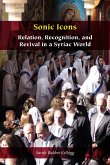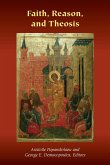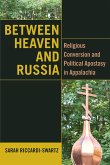An exploration of how contemporary Ethiopian Orthodox Christianity preserves and protects sacred ideas and relationships "Ethiopia stretches her hand upon God," the narrative of Sheba and Solomon, the material presence of the Ark of the Covenant in Axum. For Ethiopian Orthodox Christians, these classic understandings of the covenant are prized narratives. For historical and scriptural scholarship, a central focus is to explain the characteristics of Ethiopian Orthodox Christianity as retaining key "Old Testament" qualities to demonstrate a wide chasm with post-Enlightenment, secular societies. By widening the lens of analysis to include a body of knowledge best accessed through Orthodox Christian devotional culture, The Covenant's Veil offers an interpretation that challenges the reader to adopt a novel understanding of these well-established ideas. The multiple, complex ways that the covenant idea appears as ideas, idioms, customs, symbols, and articulations in the lifeworld of Ethiopian Orthodox are the starting point for The Covenant's Veil. Ethiopia's story of the covenant is a domain of nested reference points that inspires celebrants, through their devotional activities, to expand and elaborate upon a network of meanings. Covenant refractions within Ethiopian Orthodox devotional culture not only demonstrate the established pattern of magnifying spiritual importance through symbolic similes and analogic pairings, but perform a vital function for keeping traditional knowledge alive and current. Detailed ethnographic material arranges devotional activities such as mahaber rituals of communing and processions of tabots on feast days. It describes habits of making vows, presenting oneself at church, and telling stories of saints and their covenants. Thinking about the covenant concept as refracting-the bending motion of points encountering a common surface-is a way to conceive how these reference points reveal a connective thread, what is theorized as an Ethiopian Orthodox method of elaboration. Identifying when and where elaboration of tradition is happening provides an opportunity to demonstrate how Orthodox Christianity is integral to the lives and actions of its faithful. By reframing covenant as expanding beyond Ethiopian religious and political exceptionalism, The Covenant's Veil provides us with a timely reappraisal of this concept in light of increased social fragmentation and the urgency for negotiating harmony in a country with many forms of diversity.
Hinweis: Dieser Artikel kann nur an eine deutsche Lieferadresse ausgeliefert werden.
Hinweis: Dieser Artikel kann nur an eine deutsche Lieferadresse ausgeliefert werden.








